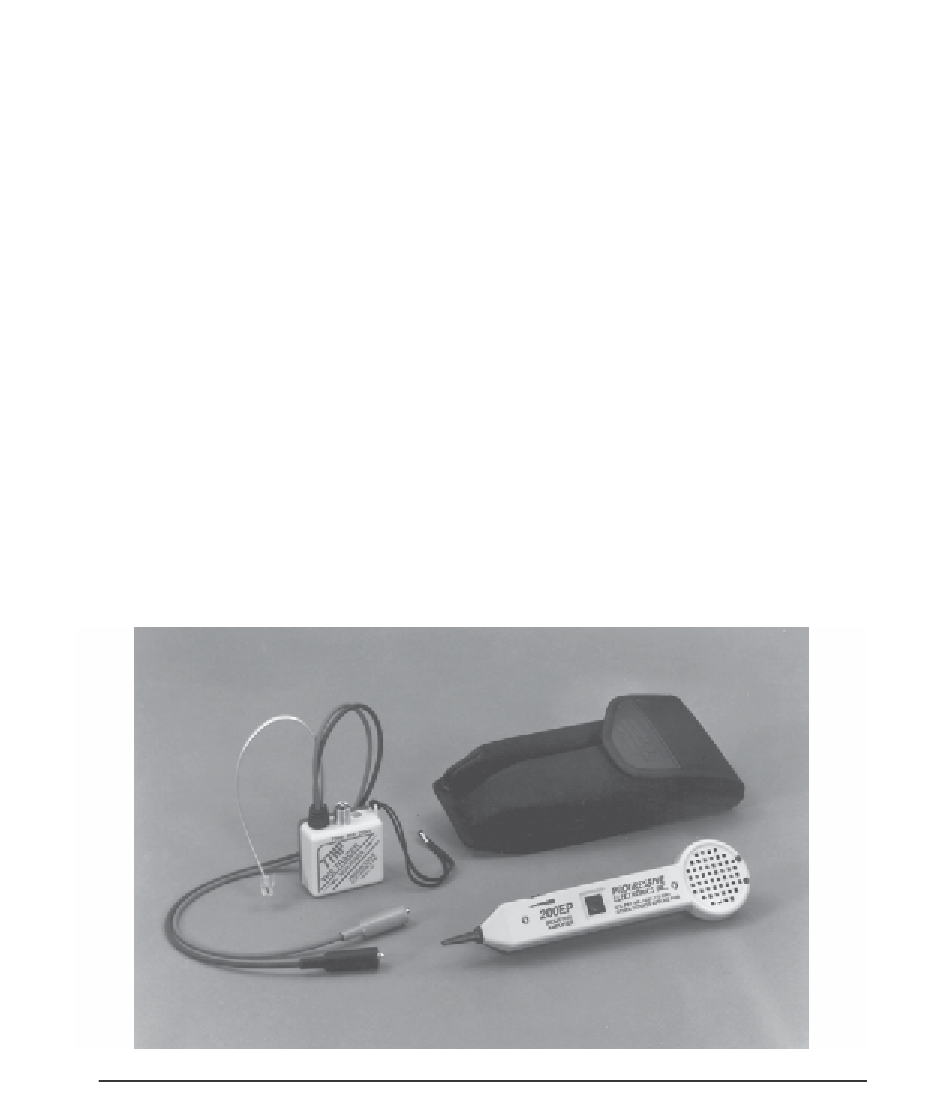Information Technology Reference
In-Depth Information
Cable Tracers
How do you find a single cable in a bundle of cables? How can you quickly verify
that an outlet is properly marked? The answer is to simply use a high-impedance
tone generator and an inductive cable tracer, shown in Fig. 15.7. These are two of
the handiest tools around, and no serious cable installer should be without them.
The tone generator was originally developed by the telephone industry to assist
its installers in tracing wires into and out of the distribution frame. Any unmarked
jack could quickly be traced by placing a “tone” on the jack and using the telephone
test set (commonly called a
butt-in set
or just
butt set
) to find the tone. The tone's
distinct warbling sound could be easily distinguished from other sounds on the
telecommunications wiring. However, the butt-in set had to be physically connected
to one of the cable's wires to hear the tone. Something else was needed.
That something is called an
inductive pickup
. This device uses a coil and a
probe point to magnetically couple to a cable so that you can pick up the tone with-
out having to make electrical contact with any of the wires. There are two types of
inductive cable tracers: the passive pickup and the amplified pickup. The passive
pickup contains only a pickup coil. Often called a “banana probe” because of its
shape, this tracer requires the use of a butt-in set to hear the tone. The amplified
probe contains a battery-powered amplifier in addition to the pickup coil. A
momentary contact switch conserves battery power when the pickup is not in use.
FIGURE 15.7
A cable tracing tone generator and inductive amplifier. (Courtesy of Progressive Electronics, Inc.)

